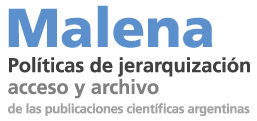Conceptualization of disaster risk. Towards the Understanding of its construction
Keywords:
Risk, Disaster, Threat, Vulnerability, ConstructionAbstract
The conceptual review shows how the concept of risk has acquired complexityin its approach and construction, as the environmental situation of human settlements is also becoming more complex. The purpose of this article is to review the concepts related todisasterrisk -threatness, vulnerability, exposure and resilience- from a sociocultural perspective. This will make it possible to understand the interrelationships that exist between them in the process of construction of risk situations and, in later stages, to understand and explain the risk construction in the Neuquén ejido. In this context, it is the historical variable that establishes how the interaction between the natural environment and society in a region has developed, thus triggering dangerous situations for the population. It is explicit in the development of the work that the risk is the result of a social construction, in which, the physical conditions of nature are the trigger, but the process of occupation of the territories propitiates the existence of risk and disaster scenarios. When the action of men is present, risk is the product of the actions of a society that does not recognize and does not respect the laws of nature. Neuquén is an example of this. It has grown between planned neighborhoods, private homes and illegal settlements, many of which have occupied places naturally unsuitable for urbanization. The city shows that
disorderly urban growth, the lack of mitigation works and the role of the State have led to the construction of vulnerabilities and the generation of situations of
environmental risk that often end up materializing in a disaster with serious damage to homes, infrastructure of services, streets and people evacuated, as happened in the storm of April 2014, in which 80% of the urban plant was flooded with dissimilar consequences in the different sectors of the ejido.
Downloads
References
Acosta, V. G. (2005). El riesgo como construcción social y la construcción social de riesgos. Desacatos. Centro de Investigaciones y Estudios Superiores En Antropología Social, 11–24.
Blaikie, P., Cannon, T., Davis, I., & Wisner, B. (1996). Vulnerabilidad: El Entorno Social, Político y Económico de los Desastres.
Cardona, O. D., & Otros, Y. (2003). Banco interamericano de desarrollo.
Universidad Nacional de Colombia-Sede Manizales Instituto de Estudios
Ambientales-IDEA-Programa de información e indicadores de gestión de
riesgos Indicadores para la Gestión de Riesgos.
Jurio, E. M., Cappelletti, V., & Torrens, C. (2017). Construcción del riesgo ambiental en la cuenca superior del río aluminé-provincia del neuquén. Eje temático 7: procesos ambientales, complejidad y riesgos. In Dpto. de Geografía. Facultad de Humanidades. UNNE (Ed.), VI Congreso Nacional de Geografía de Universidades públicas y XVI Encuentro de Profesores en Geografía del Nordeste Argentino. Resistencia, Chaco.
Jurio, E. M., & Torrens, C. V. (2015). Lo que la lluvia nos dejó: impacto de las inundaciones en la ciudad de neuquén. In Seminario Internacional “Ciencias Sociales y Riesgo de Desastres en América Latina: Un encuentro inconcluso” (pp. 1–16). Buenos Aires: PIRNA-.
Narváez, L., Lavell, A., & Ortega, G. P. (2009). La gestión del riesgo de desastres: un enfoque basado en procesos. (Secretaría General de la Comunidad Andina, Ed.). Lima, Perú.
Published
How to Cite
Issue
Section
License
Copyright (c) 2019 Boletin GeográficoTransfer of rights and data processing
The acceptance of an article for publication in the Journal Geographic Bulletin implies the cession of the rights of printing and reproduction, by any means and means, of the author in favor of the Department of Geography of the National University of Comahue, which will not reject any request reasonable for the authors to obtain permission to reproduce their contributions. The total or partial reproduction of the works published in the Geographic Bulletin must be done citing the origin, otherwise, the copyright is violated.
Likewise, it is understood that the concepts and opinions expressed in each work are the sole responsibility of the author, without being responsible or in solidarity, necessarily, neither the editorial staff nor the editorial staff.
It is the responsibility of the authors to be able to provide interested readers with copies of the raw data, procedure manuals, scores and, in general, relevant experimental material.
Likewise, the Management of the journal guarantees the appropriate treatment of personal data
COPYRIGHT TRANSFER FORM


















 Journal of the
Journal of the 